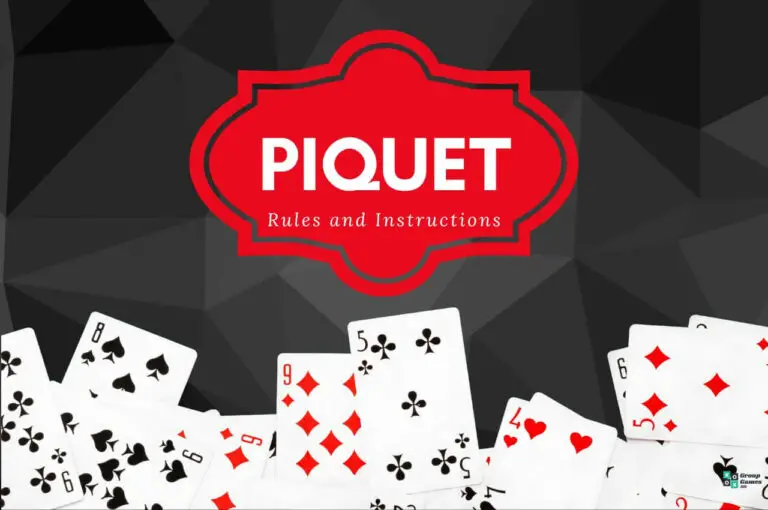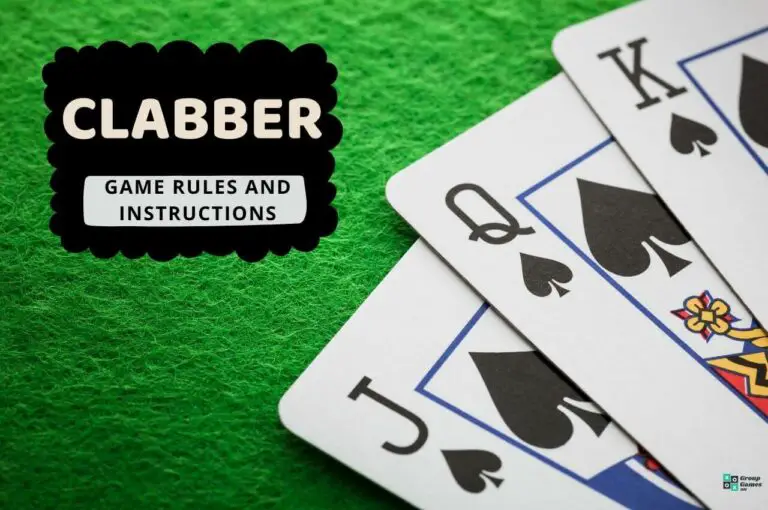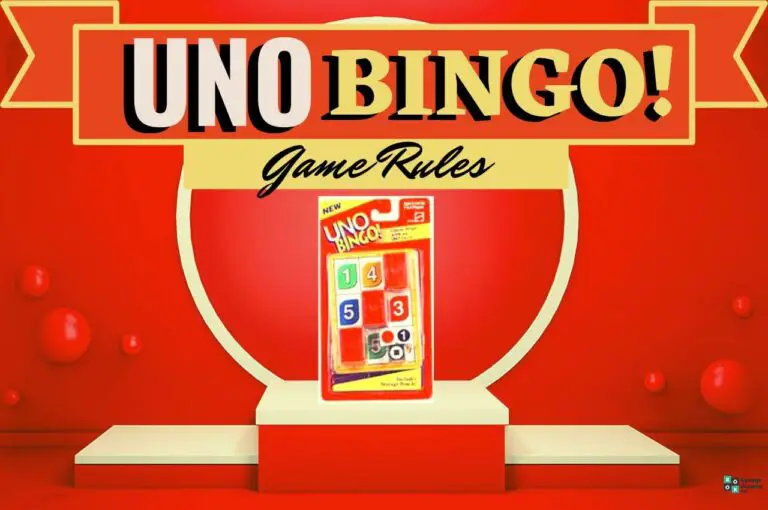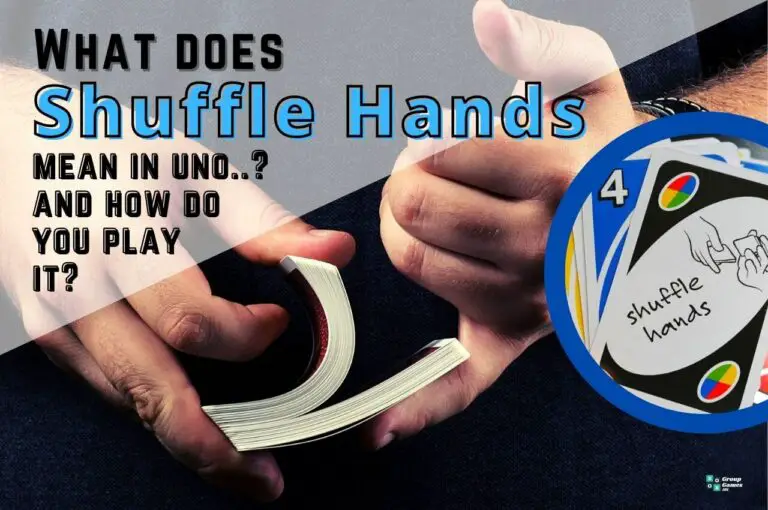Indian Poker is a wild card game involving bets and lots of unpredictability. This article serves as a comprehensive introduction to the Indian Poker rules.
Indian Poker, also known as Blind Man’s Bluff, Indian Head, or Oklahoma Forehead, challenges the players’ intuition and ability to make smart decisions under pressure.
But besides that, it’s also a great fun. It’s often played as a drinking game so that you can try it as an alternative to the Horse Race Game or the President card game.
Key highlights of this Indian Poker rules guide:
- What is Indian Poker
- Indian Poker Rules
- Indian Poker Scoring
- Indian Poker Rules in Pictures
- How to play Indian Poker (Video tutorial)
Ready to learn how to play Indian Poker? Read the step-by-step instructions below.
What is Indian Poker?
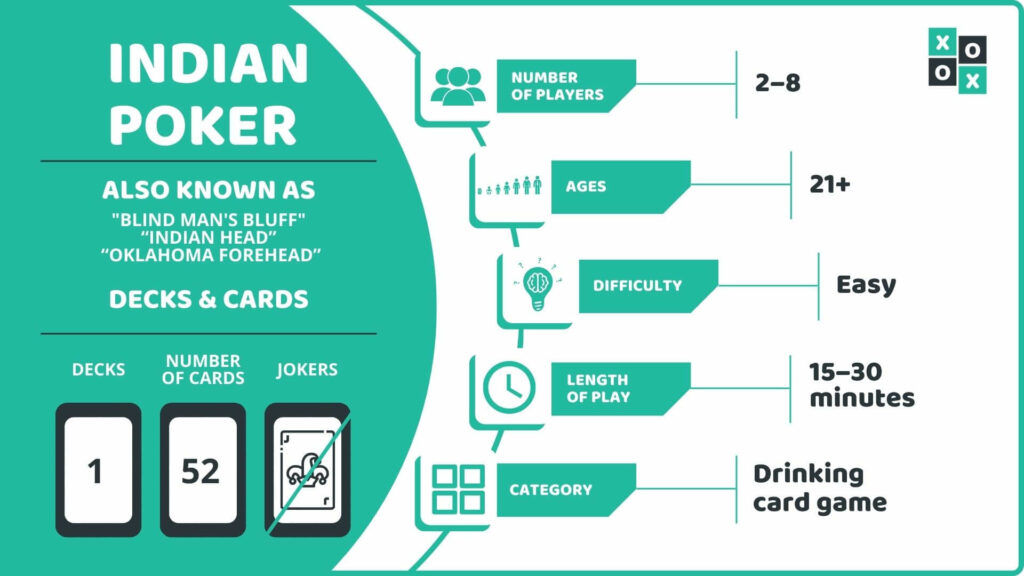
Indian Poker is a simple betting game where players see only their opponents’ cards but not their own. Whoever has the best intuition (or luck) can be the winner.
Number of Players: 2 – 8
Ages: 21+ (or less if not playing as a drinking game)
Difficulty: Easy
Length of Play: 15 – 30 minutes
Type of Game: Drinking card game
Similar to: Horse Race, President, Kings
Main Objective: Hold the highest card or at least bluff your opponents.
Our Take: If you’re looking for a fast-paced drinking game with a classic set of poker cards, Indian Poker is one of the best choices. Moreover, it’s also fun without alcohol.
What You’ll Need to Play Indian Poker
If you plan to play the Indian Poker, make sure you have the following:
- Decks: 1
- Number of Cards: 52
- Cards Omitted: Jokers
Indian Poker Rules
Learning to play Indian Poker is extremely simple, but as the game continues, it’s getting increasingly difficult to assess your next steps correctly. In any case, the real achievement in this game is not winning but having a blast with your friends.
Starting the Game
First, appoint the dealer, who thoroughly shuffles the entire deck and then deals one face-down playing card to each player.
How to Play Indian Poker
Players cannot look at their own cards, but they show them to each other by carefully placing them on their foreheads.
While observing the cards of their opponents, the players can decide whether they stay in the game (believing they can beat the others) or fold (thinking their card would be too low).
Next, the players who stayed in the game reveal their cards. The one with the highest card (see the card ranking below) wins.
Now, the players who folded check their cards and compare them to the winning card:
- If the player’s card was lower than the winning card, they must have 2 drinks.
- If the player’s card was higher than the winning card, they must have drinks equal to the value of their card (see the card values below for clarification).
- In case of a tie, no drinking is required.
Tip: You don’t have to drink alcohol to enjoy this game. Use water instead! The first player to run from the table to the bathroom loses the game. The last one sitting at the table wins!
Now it’s time for the players who stayed to compare their cards to the winning one:
- Each player has as many drinks as the difference between the value of their card and the winning card.
- Again, in case of a tie, no drinking is required.
End of the round
Once everyone had their drinks (or successfully avoided them), restart the game with the role of the dealer moving to the left. Play the game as long as you enjoy it.
Indian Poker Scoring
First, let’s take a look at the order and value of cards in this game.
Card Rank
In Indian Poker, cards are ranked from low to high as follows:
- A, 2, 3, 4, 5, 6, 7, 8, 9, 10, J, Q, K.
This order is used to evaluate which player has the highest card in the first stage of the game.
Card Value
To evaluate how many drinks a player who folded while having a higher card than the winner has to drink, use the following chart:
- A = 1
- 1-10 = the respective face value
- J = 11
- Q = 12
- K = 13
Scoring
There’s no real scoring in Indian Poker. Typically, the players who drank the most start to abandon the game voluntarily one by one, when they feel they’ve had enough.
This naturally allows the most successful player to remain the last one at the table and, thus, win the game.
Indian Poker Rules in Pictures
Step 1
Each player gets one face-down card. They don’t look at their own cards, but they place them on their foreheads for others to see. Each player decides whether they fold or stay, trying to guess the value of their cards.
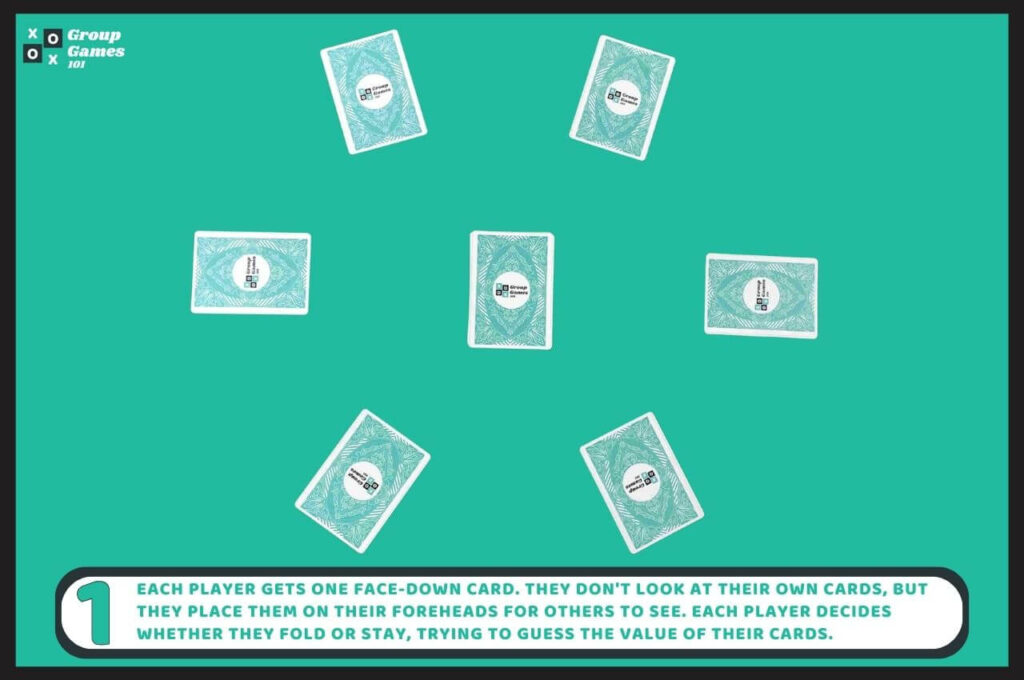
Step 2
The players who stayed now reveal their cards. The highest one is the winner – in this case, it’s the Queen.

Step 3
Next, the players who folded compare their cards to the winning card. If their card ranks lower than the winning card, they must take 2 drinks.
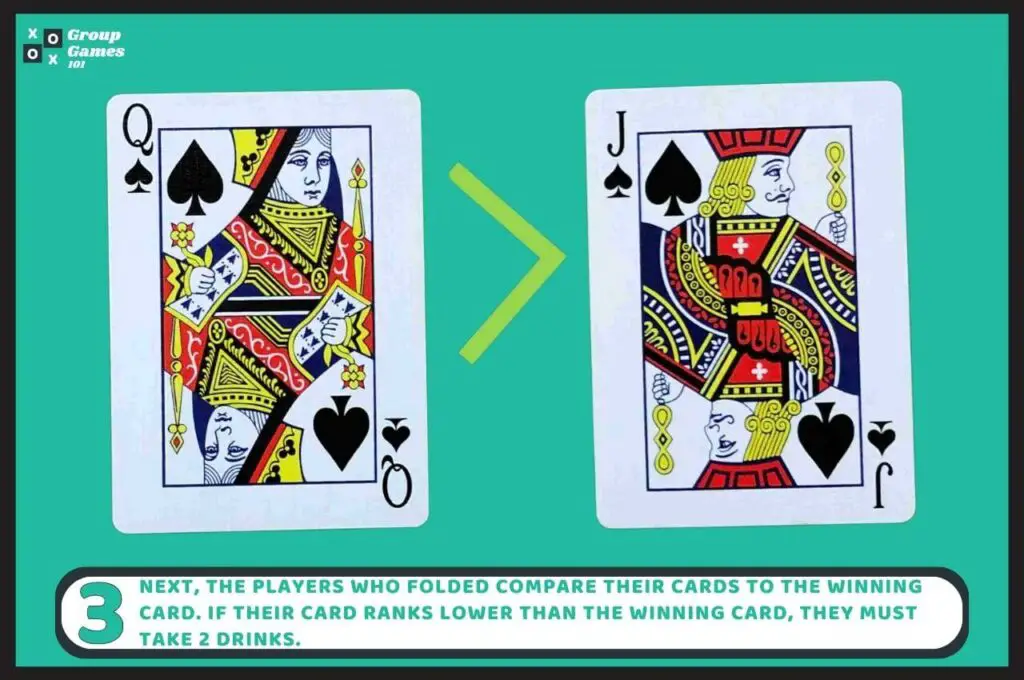
Step 4
If their card is higher than the winning card, they must drink as many drinks as the value of their card (in this case, it’s a King worth 13 drinks).

Step 5
Now, the players who stayed compare their cards and have as many drinks as the difference between their card’s value and the value of the winning card. The last player willing to continue wins the game.
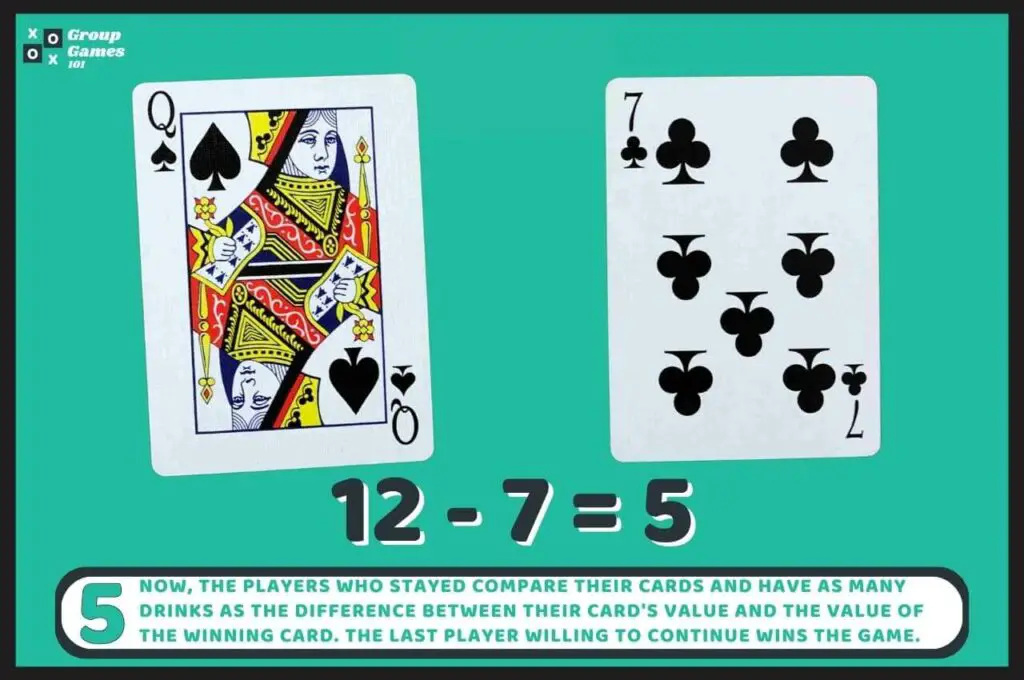
How to Play Indian Poker – Video Tutorial
Frequently Asked Questions
Why is Indian Poker also called Blind Man’s Bluff?
Indian Poker is also known as Blind Man’s Bluff because the players don’t know the value of their card when deciding on staying or folding in this game. They are, so to say, blind, trying to bluff their opponents with their bets and confidence.
How to win Indian Poker?
One of the most popular strategies to win Indian Poker is to have the best poker face and bluff your opponents into believing they have higher/lower ranking cards than they have.
Nevertheless, there’s still a huge share of unpredictability involved, so you won’t get any guarantees regardless of how good your acting is.
Can two players play Indian Poker?
Theoretically, yes, two players can play Indian Poker with minor adjustments. But the game is much more fun when played with at least 4 players.
Other Similar Games to Indian Poker (Our Guides)
If you’d like to try more simple betting games similar to Indian Poker, check our guides below:


